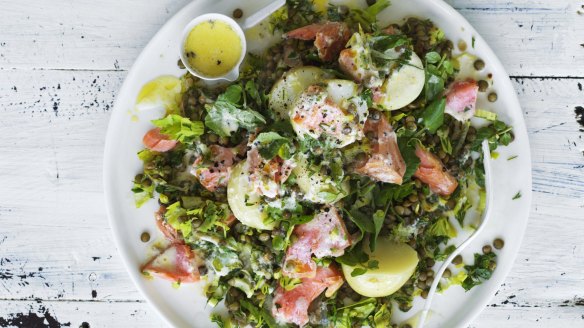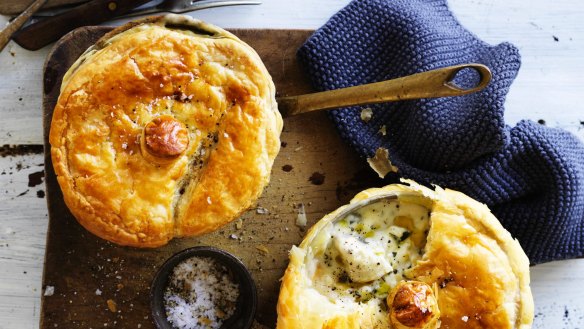Dill: Everything you need to know

Spring has sprung, and the first delicate fronds of dill are now being harvested. With its fern-like leaves and sweet, green flavour somewhere between citrus, anise and parsley, it is an essential soft herb in recipes such as pickled cucumbers, gravlax and spanakopita.
What is it?
This annual soft-leafed herb grows from a seed into a knee-high plant with deep green, thread-like leaves packed with a raft of powerful aromatic chemicals with names such as carvone and limonene.
Over summer, it produces attractive umbrella-like blooms, which produce intensely flavoured seeds. Both leaves and seeds have been used in cooking around the Mediterranean since ancient times.
The seeds, in particular, have long been used to cure stomach ailments, hiccups, bad breath and flatulence.

Why do we love it?
"Three most common things you'll find in a Greek vegie garden are tomatoes, cucumbers and dill," says Matt Germanchis executive chef at the Lorne Hotel on Victoria's Great Ocean Road.
"Dill is the base of any great Greek salad." Matt likes to make a drizzling sauce by blitzing dill with oil, which he warms to no more than 60C then allows to rest for an hour before drizzling it over savoury dishes from dips to dhufish.
Dill is essential for avgolemono, the classic Greek chicken soup, says Peter Conistis, Sydney's pioneer of Greek cuisine and owner of Ploos restaurant in The Rocks, who whisks the chopped herb into the warm soup, along with beaten egg and lemon juice, before serving.
"And dill and Greek yoghurt, in my opinion, is a marriage made in heaven – think tzatziki."

How do you use it?
The bright, clean notes make dill the perfect foil for earthy flavours such as potato, beetroot and freshwater fish.
Soon, new season potatoes will be unearthed and they love nothing more than a baptism in oil, lemon juice, spring onion and loads of fresh dill for a fresh potato salad.
If you have never made your own gravlax, it is a simple preparation involving salmon, salt, sugar, pepper, dill and patience.
Finely chop dill and mix it with cucumber, red onion and feta for a quick spring salad.
Blend a small bunch of chopped dill leaves with 80ml extra virgin olive oil, the juice of a lemon, pinch of salt and a teaspoon of honey until smooth and drizzle over anything from grilled fish to steamed vegetables.
Fold chopped dill through salads of grains and pulses and enrich with Persian feta or make a hearty Greek lamb pie with a crusty yoghurt topping.
Use dill seeds in breads, slow-cooked meat dishes and when making your own dill pickles.
Where do you get it?
Markets, supermarkets, greengrocers and food stores. Dill is grown throughout the year but is at its seasonal best from now until summer. Buy a pack of dill seeds and grow your own in a pot.
Once cut, dill wilts quickly, so store in wet paper towel in a plastic container in the fridge.
Send your culinary conundrums and ingredient suggestions to brainfood@richardcornish.com.au or Twitter and Insta @foodcornish.
Appears in these collections
- More:
- Food
- Brain food
